Bowhunter by Fall
August - Practicing, License Purchase and Shot Placement
Hello future bowhunters! Since July's edition, we hope that you have taken some time to think about where you might hunt or looked into a program that could help you. Getting out from behind a phone or computer and into the socially distant woods sounds appealing to us, and we hope it does for you too. We are starting to get that itch as the hunting season draws closer!
If you have decided to hunt on public lands, here are a few tips to help you be most effective, while in consideration of other hunters using the same land.
Carry on with us as we suggest some practicing habits, offer pointers on your shot placement on your intended harvest and the purchase of a license. You know that the season is drawing closer when the applicable license for the 2020 season goes on sale this week, on August 15th!
Effective Practicing
Practice can mean the difference between having venison or salad for your dinner table. You should practice as much as you safely can, and you should mix up your approach to practices. Below you will find a layout on how you can get your practice in before your season starts.
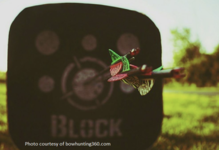
Where to Shoot
Finding a place to shoot is important. If possible, practice at or near where you will hunt. If you want or need an indoor or large outdoor range, you can find one near you by utilizing the search feature at archery360.com.
Is it safe to shoot in your own backyard? Check here for suggestions on how to decide. The first suggestion listed is to check on your local laws.
|
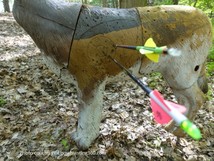
How Much Should You Shoot?
Shoot as often as your schedule allows. However, shooting too much can be a bad thing as well. A good rule of thumb is to shoot until your arms start to feel tired or until you cannot group all your arrows on the target inside of a spot the size of a paper plate. This is to prevent fatigue, injury and missed arrows.
For beginner archers this shooting fatigue may set in after shooting 10 sets of 3-5 arrows. This will vary for each shooter due to different draw weights and muscle conditioning. As you practice more, you we be able to do more sets. You can add more arrows in each set, but you risk damaging your arrows this way. As your grouping of arrows gets tighter, arrows may impact each other on the target causing damage. Fewer arrows in the target will decrease the frequency of this occurring.
If you can shoot multiple times a day that is good, but be aware of what your body is telling you and pay attention to the conditions. If it is a hot and sunny day, make sure to take breaks, drink plenty of water and do not forget your sunscreen.
|

What Distances Should You Shoot?
Practice at the distances that you are most likely to see your game at when you are in your blind or stand. This adds to your homework for your field visits. Are you setting up near a frequented trail or watering hole? Take the time to measure the distance from that trail to your sitting spot, and spend extra time being comfortable with shots from that distance.
Limit the shots you take at game animals to the distances you are consistently effective at. Check here for advice on knowing your effective range. If your 20-yard shot is dead on, but you are still developing your 30-yard shot, stick to shots that are 20-yards or less. Never “try” to hit an animal. Only release that arrow when you know your range, and that it will safely, legally and ethically kill that animal so that it can be harvested.
If you want to be ready to shoot game at several distances, set your pin sights in for intervals of 10 yards. For example, 10 yards, 20 yards, and 30 yards. If you want to shoot past 30 yards, make sure you are consistently shooting tight (less than 4-5 inch) groups at 30 yards before you move back. If you need help adjusting your sights, check out the tips from bowhunting360.com.
|
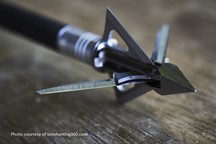
How to Practice
Once you are sighted in at the distances you want to shoot at, and you are shooting tight groups, it is time to start changing up your shooting stance. If you are going to be hunting from a stand you will most likely be shooting from a seated position. Bring a chair with you to practice and shoot from a chair at each distance you are sighted in for.
If you plan to stalk or still hunt, try to practice from a kneeling position. Change the angle you shoot at your target. Deer will not always be perfectly broadside to you in the woods.
Spot and stalk hunting is a skill that requires being careful and stealthy. Read here for advice, or check out some quick tips for improving your approach.
If you plan to hunt form an elevated position, try to find a way to practice like that. You can shoot from the back of a truck or off a porch. If you can take a target to where you plan to hunt. Go ahead and shoot from your stand to get comfortable with shooting from it.
Make sure you find time to practice with a practice broadhead. Your arrows will fly a differently with broadheads than with field points. It is important to take the time to tune your shot for the broadheads before going into the field. Check here for more help with tuning your broadheads, or more information on differing types of broadheads available to you, and the damage they are intended to inflict.
Choose one broadhead to use as your “practice” broadhead to keep your hunting heads sharp. Use one that is the same make, model and weight of the heads you will use during the season. This will confirm that your broadhead, arrow and bow are tuned and working together properly. Make sure the target is rated, or otherwise states, it is appropriate for broadheads and that they are allowed at the location you are practicing at. Some clubs and ranges do not allow broadheads to extend the life of their targets.
|

New Gear?
This is your last chance to get new gear. If you want to add, replace, or remove a piece of gear, such as a release aid, stabilizer, sight, or broadheads, this is the time to do it. Any changes you make will impact the flight of the arrows and will result in more practice. Make sure you have plenty of time after you make changes to your gear so that you can practice with the new set up.
|

Have A Buddy
It is always nice to have a practice buddy. This is a person that can help keep you accountable and make sure you are getting in the practice time, as well as someone to bounce ideas off of when you are having an issue or they can offer feedback on your stance, draw and form while shooting.
Practice is the difference between success and failure. Make sure you take the time to get on the range, get comfortable with you gear, and get yourself ready for that big buck. The Navy SEALS have a saying, “when your adrenaline hits, you are only as good as your worst day at practice.” Hit the range and good luck in October!
|

Shot Placement
Now that you have practiced, let's talk about where you should aim for your harvest.
Shot placement is the critical skill of hitting an animal with your arrow in the exact spot where it will cause the fastest, most humane kill, resulting in the efficient recovery of that animal. It requires you to understand the limitations of your equipment and your own skills, to understand animal anatomy and behavior, to estimate range, angle of arrow flight and how that arrow behaves once it makes contact with the animal and passes through it. Develop strength in these areas for success when you transition from punching holes in a static, 2-dimensional target to taking an advanced lethal shot at a breathing, moving animal whose bone structure and instincts are built around survivability.
If you’re working to become a “Bowhunter by Fall” you owe it to yourself and the animals you hunt to practice and to understand your abilities.
|
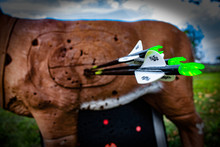
3D Archery Helps!
Develop precision and accuracy while shooting traditional targets and add to your practice with targeting life-size, 3-Dimensional animal-shaped targets. 3D Archery is an active and educational sport that applies target shooting to a hunting context. Develop a life-like sight picture and mental image of your targeted animal to become a better bowhunter.
|
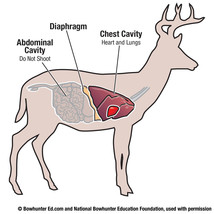
Shot Timing
For the new bowhunter it is critical to wait to shoot until the right opportunity and knowing where to aim to hit the vital organs. This means a broadside angle, unobstructed by terrain, vegetation or weather and when the animal is in a calm, not alarmed state. Understanding deer's body language helps to time your draw and shot too. This will give you the best chance to make a humane kill and recover that animal.
|

Placing Your Aim
Before you head into the woods and draw on your first animal, test yourself and confirm your shot placement ensuring your choice will hit the vital organs.
Take these quizzes and read about the reasons for or against certain shots:
Having the discipline to hunt within your abilities helps harvest your target and saves heartache. Commit to being a responsible hunter and the victory and meal will taste that much better.
|

Purchasing Your Hunting License in Texas
As hunting season draws closer, you may still have questions about purchasing your hunting license. Since these are uncertain times, we want this process to be stress free, therefore, we have put together the following information that will hopefully make this quick and easy for you.
Who needs Hunter Education? Every hunter (including out-of-state hunters) born on or after Sept. 2, 1971, must successfully complete hunter education. Minimum age for certification is 9 years and the cost is $15.
If you were born on or after September 2, 1971 and you are:
- Under 9 years of age, you must be accompanied.
- Ages 9 through 16, you must successfully complete hunter education, OR you must be accompanied.
- Age 17 and over, you must successfully complete hunter education; OR purchase a “Hunter Education Deferral,” and you must be accompanied.
Visit our Hunter Education FAQ for a complete listing of Hunter Education and Deferral related questions.
|

What do your hunting & fishing license fees fund? 100% of your hunting and fishing license fees go to TPWD's on-the-ground conservation efforts. Fish stocking, wildlife management, habitat restoration, land conservation, and Texas Game Wardens are just some of the initiatives funded in part by your license fees.
When do new year licenses go on sale? August 15. Most recreation hunting and fishing type license packages are valid from date of purchase in August (August 15 and later) through August 31 of the following year.
Where can I purchase an official Texas hunting & fishing license? Texas recreational hunting and fishing licenses, tags, permits and stamps are available for purchase in person at license retailers or online at the official license sales site txfgsales.com.
What is Resident and Non- Resident License? Resident is defined as a person who has resided in Texas at least six months immediately prior to applying for a license, tag or permit. Non-Resident is a person who is not a Texas resident. Non-residents under 17 years of age are considered residents for the purchase of the youth hunting license.
Endorsements (historically called “stamps): In addition to license requirements, the purchase of a license endorsement may be required to engage in certain hunting and fishing activities. For example, an archery endorsement is required to hunt during an "archery-only season" or to hunt deer at any time in Collin, Dallas, Grayson, or Rockwall counties with a bow and arrow. See Purchase Requirements for Licenses, Endorsement & Tags for more details.
Does Texas offer any combination Hunting and Fishing License Packages? One of the most overlooked license options by Texas residents is the “Super Combo License Package” which includes a hunting and fishing License and five state endorsements at a discounted price.
|
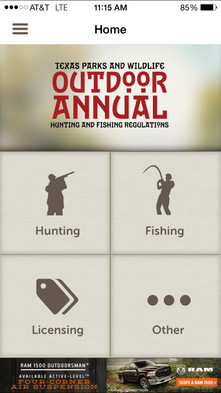
Your Hunting License and the Outdoor Annual Mobile App
You can now use your mobile device to show proof of hunting and fishing licenses for activities that do not require tagging or physical stamps. Enter your license information in the Outdoor Annual mobile app “Licenses” section of the app.
What do I need to carry with me in the field?
If stopped by a Game Warden in the field, you must be able to produce the following:
- Identification
- Your license, via paper or the application
- Archery endorsement if hunting during "archery only" season or in Collin, Dallas, Grayson, and Rockwall counties
- Proof of hunter education certification or deferral
- Any physical tags printed with your license that is required to identifying your harvest as yours
-
Annual Public Hunting Permit if hunting on Texas’ one million acres of public and privately owned lands that allow public hunting through a partnership with TPWD. Look back at July’s video for more assistance with public hunting access.
|
These are answers to some of the most important questions you may have about license or other hunting related topics. There is more detailed information that can be found in the Hunting section of the TPWD website. For additional support, please feel free to reach out to your TPWD Community Archery Specialist to help answer your questions. Our group of certified archery professionals encourages you to be prepared for a safe and enjoyable hunting season.

Remember our friends at Bowhunting360.com too! They have a wealth of information to help you understand scouting even further!
|
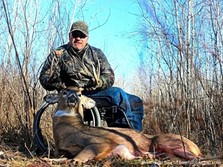 |
|
More in August!
From your survey responses, we have seen that several subscribers have suggested that physical limitations are a barrier between them and bowhunting. Look for a second edition of "Bowhunter By Fall" later in August with suggestions to help.
|
We hope that you are putting arrows in targets, found a friend to share hunting with and started looking for the land you plan to hunt. Take advantage of the cool summer mornings to put some boots on the ground, or if you can escape your desk, pull up some overhead maps and look for those transition zones or edge habitats we talked about in July. Your harvest, adventure and memories made will make the time invested worth it! Better yet, next year's season start will be even easier with a year under your belt.
Do you have a friend who you would like to share this campaign with? Share this link, and we will catch them up to speed.
TPWD's Community Archery Team
Texas Parks and Wildlife Department
(512)389-4361 (office)
Robert.Owen@tpwd.texas.gov
|